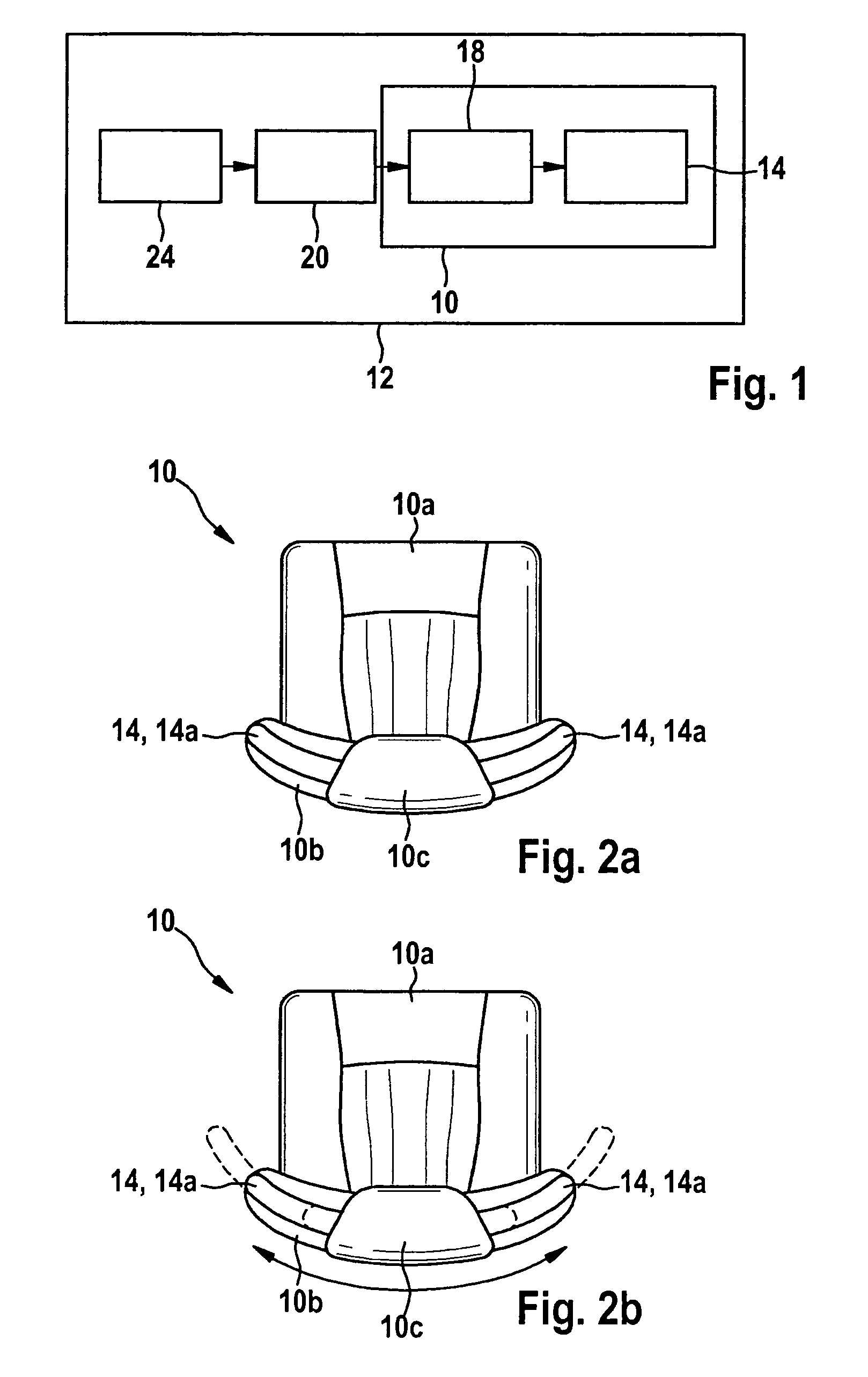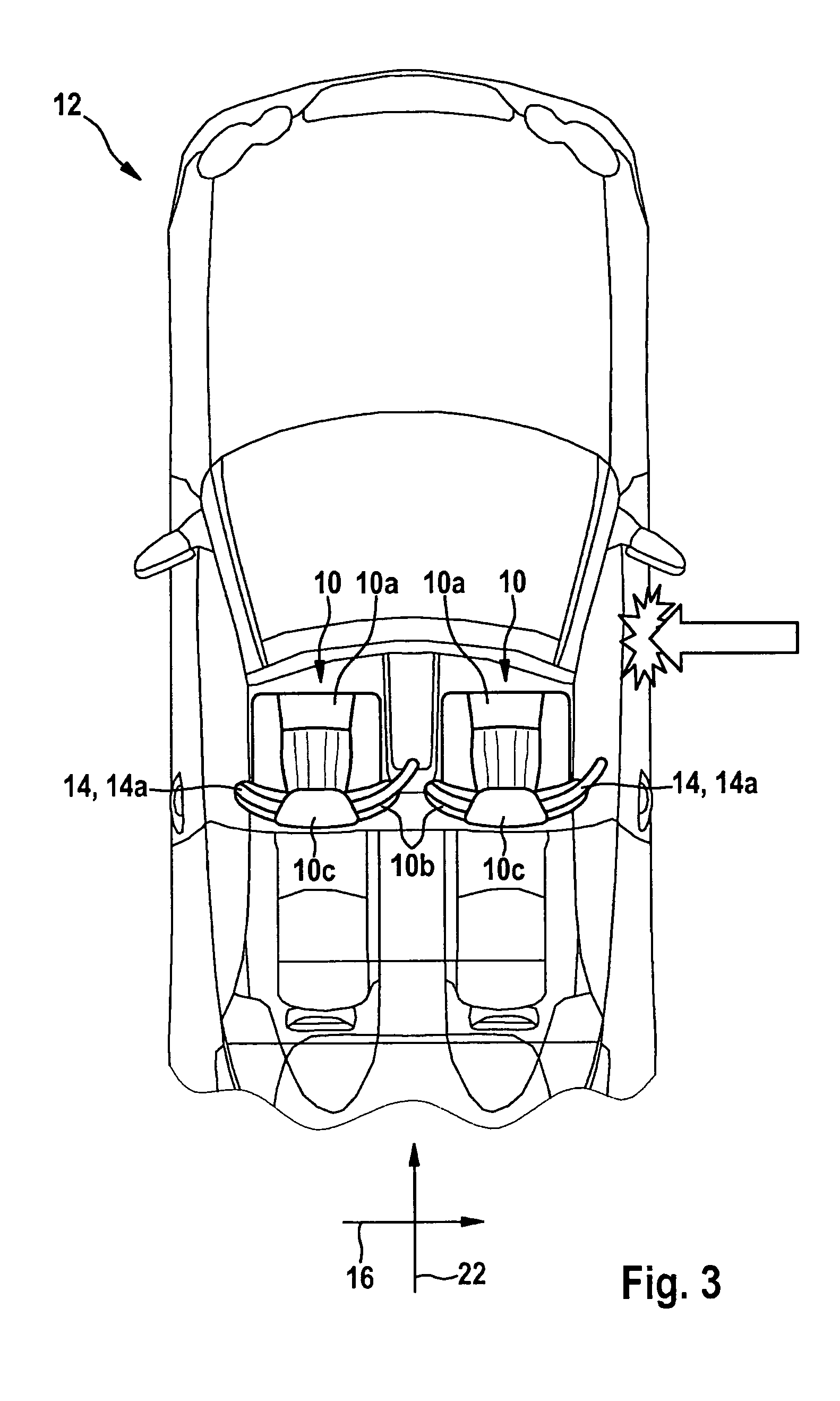Vehicle seat
a technology for vehicles and seats, applied in the field of vehicles, can solve the problems of not being able to ensure sufficient occupant protection through the vehicle structure on the vehicle side facing away from the crash, and the thorax airbag used to protect the thorax region may not inflate at all, so as to reduce the stress on the head of the child, enhance the lateral retention of the child and the child seat, and ensure the safety of the child sea
- Summary
- Abstract
- Description
- Claims
- Application Information
AI Technical Summary
Benefits of technology
Problems solved by technology
Method used
Image
Examples
Embodiment Construction
[0034]As is evident from FIG. 1, a system for an occupant protection system in a vehicle 12 encompasses a sensor system 24, a control system 20, and at least one restraint means that encompasses a vehicle seat 10 having displaceable seat components14 which produce a lateral bracing as a function of accelerations in the direction of a transverse vehicle axis 16. Control system 20 is preferably the airbag control device; other control devices disposed in the vehicle, for example an ESP control devices, or combined control devices, are also conceivable. Sensor system 24 possesses sensors that detect the vehicle state in terms of motion, surroundings, and crash situations. In other words, sensor system 24 senses information concerning a vehicle interior, a vehicle environment, an impact, and / or vehicle-dynamics variables. Control system 20 receives the sensed information from sensor system 24 and evaluates the received information in order to ascertain a present driving situation; contr...
PUM
 Login to View More
Login to View More Abstract
Description
Claims
Application Information
 Login to View More
Login to View More - R&D
- Intellectual Property
- Life Sciences
- Materials
- Tech Scout
- Unparalleled Data Quality
- Higher Quality Content
- 60% Fewer Hallucinations
Browse by: Latest US Patents, China's latest patents, Technical Efficacy Thesaurus, Application Domain, Technology Topic, Popular Technical Reports.
© 2025 PatSnap. All rights reserved.Legal|Privacy policy|Modern Slavery Act Transparency Statement|Sitemap|About US| Contact US: help@patsnap.com



